
John's Experiment - Physical Science - Grades 6-8
- Subject:
- Physical Science
- Material Type:
- Lesson Plan
- Date Added:
- 07/18/2022

John's Experiment - Physical Science - Grades 6-8
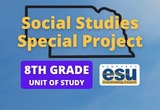
Did early Americans have to move west? This inquiry leads students through an investigation of Americans moving west. Students will learn about land use in America, the population change in America, and the Indian Removal Act of 1830. Resource created by Justin Bray, Fremont Public Schools, as part of the Nebraska ESUCC Social Studies Special Projects 2023 Inquiry Design Model (IDM).
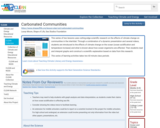
This series of two lessons uses cutting-edge scientific research on the effects of climate change on communities in the intertidal. Through a combination of a dynamic presentation and several videos, students are introduced to the effects of climate change on the ocean (ocean acidification and temperature increase) and what is known about how ocean organisms are affected. Then students read and interpret graphs and construct a scientific explanation based on data from this research.

An interactive lecture demonstration intended to help students use physics reasoning to predict the outcome of a puzzling electrostatics demonstration.
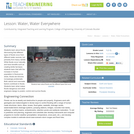
Students learn about floods, discovering that different types of floods occur from different water sources, but primarily from heavy rainfall. While floods occur naturally and have benefits such as creating fertile farmland, students learn that with the increase in human population in flood-prone areas, floods are become increasingly problematic. Both natural and manmade factors contribute to floods. Students learn what makes floods dangerous and what engineers design to predict, control and survive floods.

Students work in teams of two to discover the relative positions of the Earth, Sun and Moon that produce the different phases of the Moon. Groups are each given a Styrofoam ball that they attach to a pencil so that it looks like a lollipop. In this acting-out model exercise, this ball on a stick represents the Moon, the students represent the Earth and a hanging lightbulb serves as the Sun. Students move the "Moon" around them to discover the different phases. They fill in the position of the Moon and its corresponding phase in a worksheet.
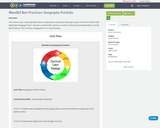
This resource was created by Matt Skiles in collaboration with James Dalrymple as part of the 2019-20 ESU-NDE Digital Age Pedagogy Project. Educators worked with coaches to create Unit Plans promoting BlendEd Learning Best Practices. This Unit Plan is designed for 9-12 Social Studies.
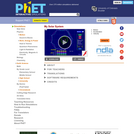
Build your own system of heavenly bodies and watch the gravitational ballet. With this orbit simulator, you can set initial positions, velocities, and masses of 2, 3, or 4 bodies, and then see them orbit each other.
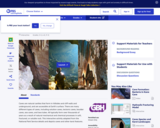
This interactive resource adapted from the National Park Service presents the key concepts of cave and karst systems, including how and where they form, different types, and various cave environments.

A PBL project I did in my HS physics and math classes to allow students voice & choice in the design of a maker space my school was building. It followed the Buck Institute model and allowed students to prove mastery in a varitey of learning targets per topics in both courses (probability, geometry, functions, algebra, and trig in geometry and force, energy, electricity & magnetism, etc. in physics). Please feel free to remix this project to suit your own needs.
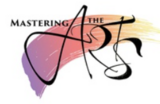
This resource was created by Janis Nicholas, in collaboration with Lynn Bowder, as part of ESU2's Mastering the Arts project. This project is a four year initiative focused on integrating arts into the core curriculum through teacher education and experiential learning.

Shellfish like oysters and clams are an important part of Washington State native traditions, the economy and coastal ecosystems. Shellfish have faced and continue to face many challenges including overfarming, pollution and ocean acidification. Shellfish also have an important role in addressing these challenges because of their ability to provide habitat for other species and filter pollutants, bacteria and excess nutrients from the water.In this unit students learn about the stakeholders, history, economics and cultural importance of shellfish in the Puget Sound/Salish Sea regions. Then they learn about how shellfish interact with their environment and their importance in local ecosystems. Finally they learn about some of the current environmental challenges and some solutions linked to shellfish. They will create a persuasive product from the viewpoint of one of the stakeholder groups. They should argue from evidence why shellfish are important to that group and what should be done with shellfish in the future.

This is a physical education lesson plan that teaches jump rope skills and some of its health benefits.

This lesson allows students a quick view of Bo-Taoshi, a Japanese military training exercise. They will then be challenged to create their own game using items they create, or have at home.
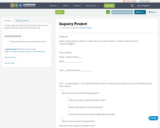
To have a plan for students to learn about why we have a physical education class and the purpose of it
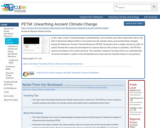
In this video, a team of paleontologists, paleobotanists, soil scientists, and other researchers take to the field in Wyoming's Bighorn Basin to document how the climate, plants, and animals there changed during the Paleocene- Eocene Thermal Maximum (PETM). During this time a sudden, enormous influx of carbon flooded the ocean and atmosphere for reasons that are still unclear to scientists. The PETM is used as an analog to the current warming. The scientists' research may help inform our understanding of current increases in carbon in the atmosphere and ocean and the resulting impact on ecosystems.
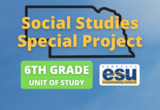
This inquiry leads students through an investigation of natural disasters and why people live in areas that are consistently affected by natural disasters. Resource created by Matt Myers, Nebraska City Public Schools, as part of the Nebraska ESUCC Social Studies Special Projects 2023 - Inquiry Design Model (IDM).

Heated Cup of Water - Physical Science - Grades 6-8

Layers in a Test Tube - Physical Science - Grades 6-8
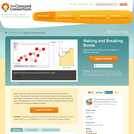
In this interactive activity, learners explore factors that cause atoms to form (or break) bonds with each other. The first simulation depicts a box containing 12 identical atoms. Using a slider to add heat, students can see the influence of temperature on formation of diatomic bonds. Simulations #2 and #3 introduce learners to reactions involving two types of atoms. Which atom forms a diatomic molecule more easily, and why? The activity concludes as students explore paired atoms (molecules). In this simulation they compare the amount of energy needed to break the molecular bonds to the energy needed to form the bonds. This item is part of the Concord Consortium, a nonprofit research and development organization dedicated to transforming education through technology.